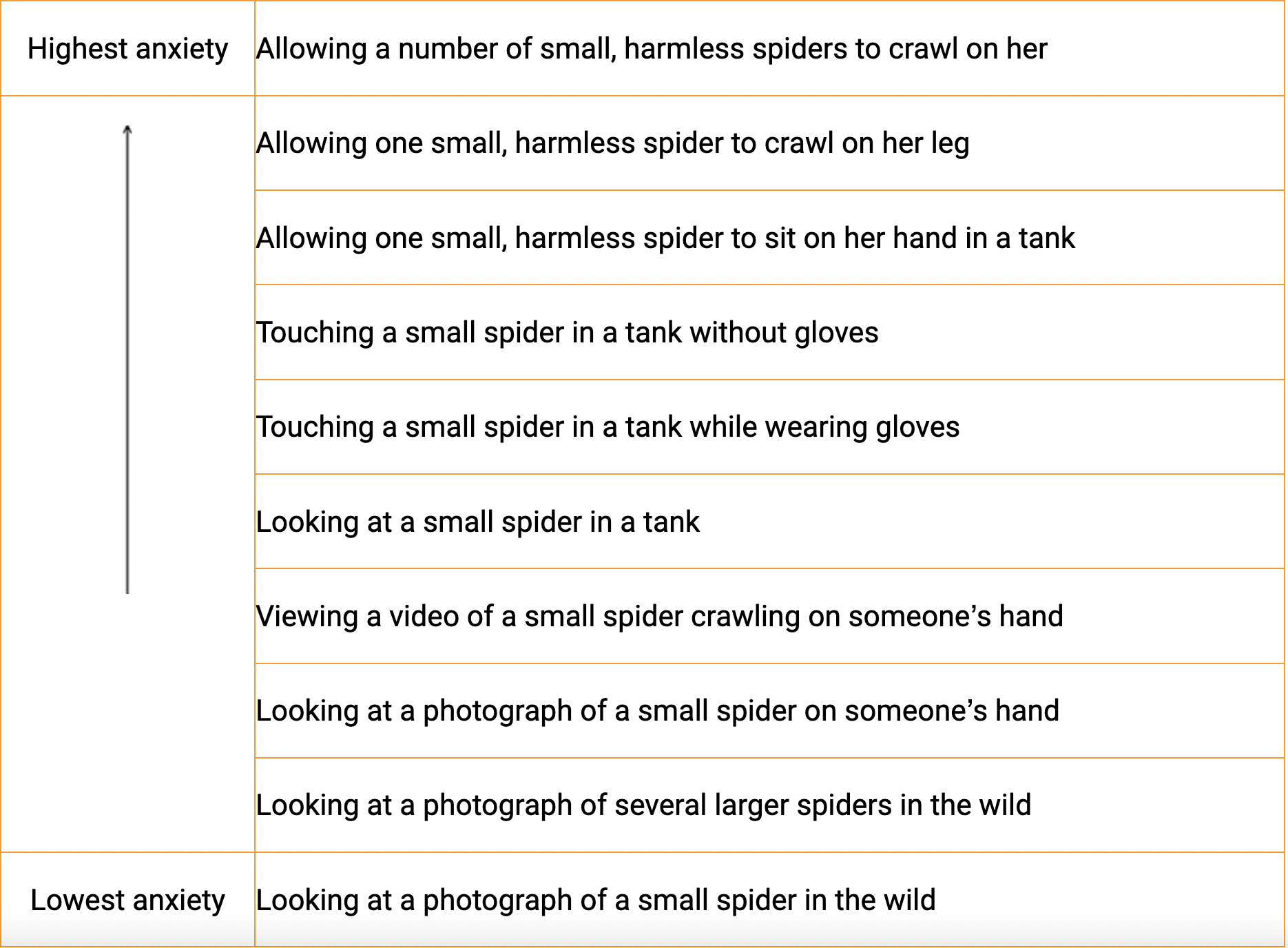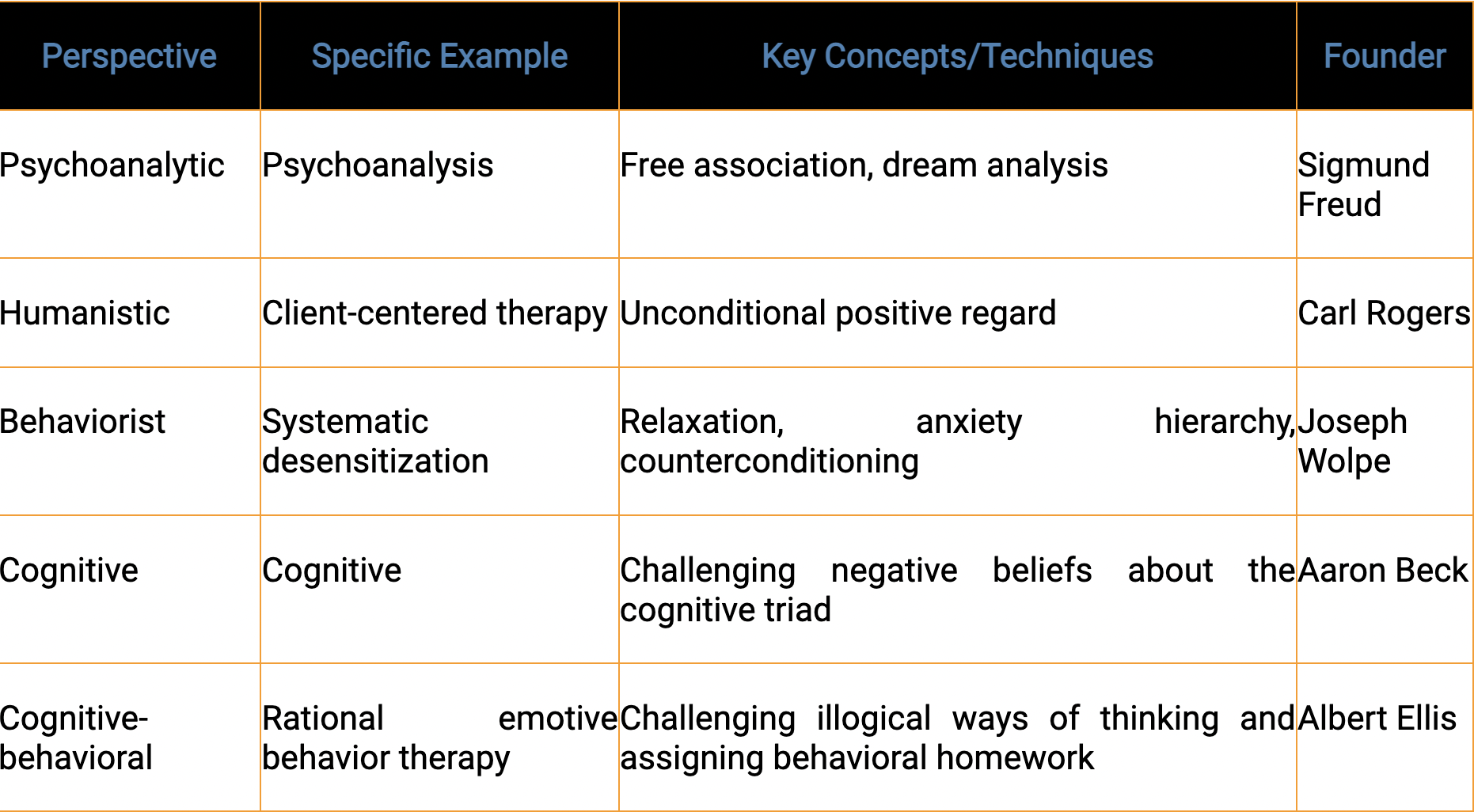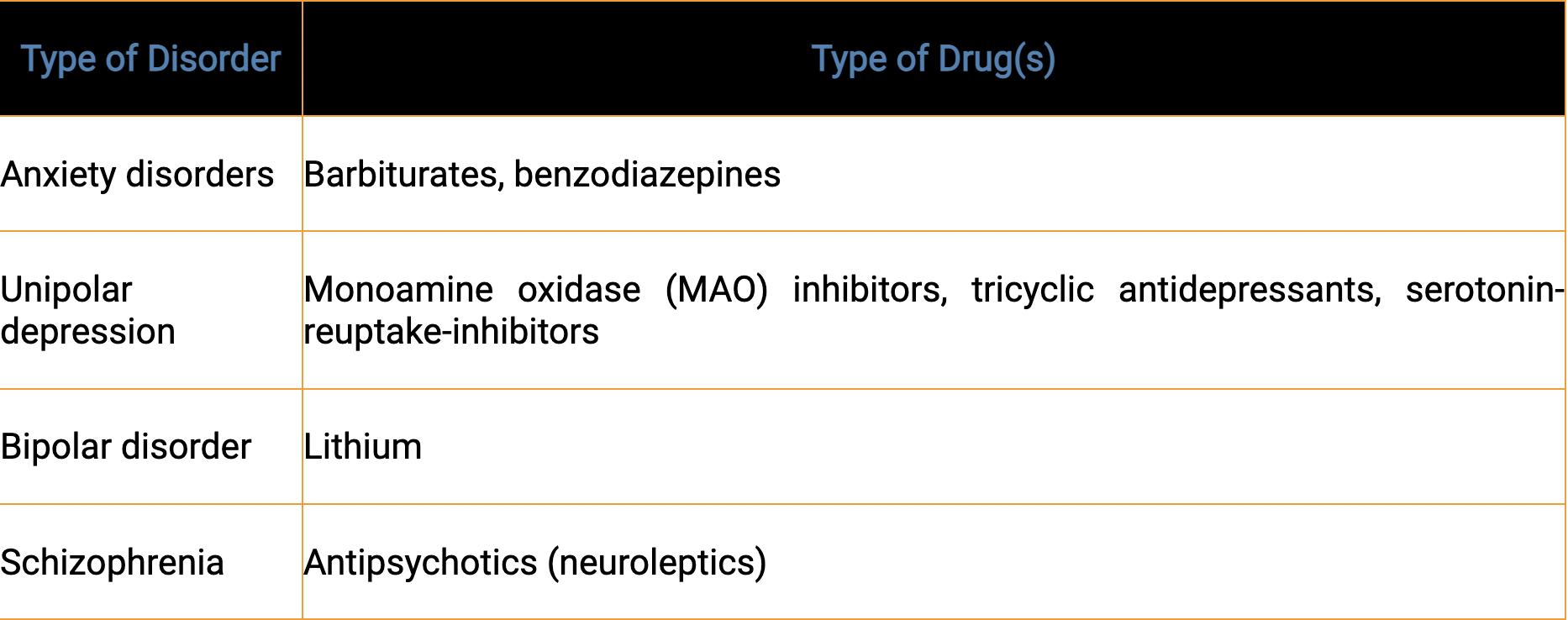chapter 13: treatment of psychological disorders
history
people have always suffered from psychological problems, but the attitudes toward and treatment of these people have changed
the mentally ill were seen as possessed by evil spirits very long ago
researchers theorize that the making of holes in unearthed human skulls, which was a process called trephining, was a form of treatment that was supposed to let the spirits escape
the development of drugs in more recent times that moderated the effects of severe disorders caused many people to be released from mental institutions and was called deinstitutionalization
a growing emphasis has been placed on preventative efforts, which means that if psychological problems can be treated proactively, or before they become severe the suffering of the client as well as the cost of providing care can be reduced
these preventative efforts can be described as primary, secondary, and tertiary
primary prevention efforts: attempt to reduce the incidence of societal problems, such as joblessness or homelessness, that can give rise to mental health issues
secondary prevention efforts: involves working with people at risk for developing specific problems
tertiary prevention efforts: aim to keep people’s mental health issues from becoming more severe
types of therapy
psychoanalysis is a therapeutic technique developed by Sigmund Freud
psychoanalytic theorists view the cause of disorders as unconscious conflicts. as a result, their focus is on identifying the underlying cause of the problem.
psychoanalysts assert that patients will suffer from symptom substitution.
symptom substitution - after a person is successfully treated for one psychological disorder, that person begins to experience a new psychological problem
hypnosis is an altered state of consciousness. when in this state, psychoanalysts believe that people are less likely to repress troubling thoughts
psychoanalysts ask patients to free associate
free associate - to say whatever comes to mind without thinking
this technique is based on the idea that we all constantly censor what we say, allowing us to hide some of our thoughts from ourselves, so if we force ourselves to say whatever pops into our minds, we are more likely to reveal clues about what is really bothering us
when psychoanalysts use dream analysis, they ask their patients to describe their dreams
all three of these techniques rely heavily on the interpretations of the therapists
in dream analysis, what the patient reports is called the manifest content of the dream
what is really of interest to the analyst is the latent or hidden content
psychoanalysts may see such objections as signs of resistance
one final aspect of psychoanalysis involves transference.
transference - when, in the course of therapy, patients begin to have strong feelings toward their therapists
insight therapies - highlight the importance of the patients/clients gaining an understanding of their problems.
humanistic therapies
one of the best-known humanistic therapists is Carl Rogers. he created client-centered therapy, also known as person-centered therapy
client-centered therapy - hinges on the therapist providing the client with what Rogers termed unconditional positive regard
unconditional positive regard - blanket acceptance and support of a person regardless of what the person says or does
client-centered therapy, and humanistic therapies in general, are non-directive, or would not tell their clients what to do but, rather, would seek to help the clients choose a course of action for themselves
often, client-centered therapists say very little, and mirror back what clients are saying. this technique is known as active listening
another type of humanistic therapy is Gestalt therapy
these therapists encourage their clients to get in touch with their whole selves
existential therapies - are humanistic therapies that focus on helping clients achieve a subjectively meaningful perception of their lives
behavioral therapies
counterconditioning - a kind of classical conditioning developed by Mary Cover Jones in which an unpleasant conditioned response is replaced with a pleasant one
one behaviorist method of treatment involving counterconditioning was developed by Joseph Wolpe and is called systematic desensitization
this process involves teaching the client to replace the feelings of anxiety with relaxation
the first step in systematic desensitization is teaching the client to relax
next, the therapist and client work together to construct what is called an anxiety hierarchy
anxiety hierarchy - is a rank-ordered list of what the client fears, starting with the least frightening and ending with the most frightening
in the process of in vivo desensitization, the client confronts the actual feared objects or situations, while in covert desensitization, the client imagines the fear-inducing stimuli

another method of treating anxiety disorders that uses classical conditioning techniques is called flooding
flooding - like systematic desensitization, can be in vivo or covert, and involves having the client address the most frightening scenario first
if someone was to address the most frightening scenario but nothing bad was happening to them, the fear would be extinguished
modeling is a process through which one person learns by observing and then imitating the behavior of another
modeling is a melding of cognitive and behavioral ideas, but it makes sense to discuss it with systematic desensitization and flooding because all three are exposures therapies; all involve some degree of contact with the feared stimuli
another way that classical conditioning techniques can be used to treat people is called aversive conditioning
aversive conditioning - involves pairing a habit a person wishes to break such as smoking or bed-wetting with an unpleasant stimulus such as electric shock or nausea
cognitive therapies
their methods of therapy concentrate on changing these unhealthy thought patterns
a pessimistic and unhealthy attributional style would involve blaming yourself and discouraging yourself
a healthier attributional style would view the cause of whatever occurred as external (it was difficult), specific (the topic was difficult), or temporary (you can do better later on)
cognitive therapy - created by Aaron Beck, a process most often employed in the treatment of depression, involves trying to get clients to engage in pursuits that will bring them success
cognitive behavioral therapies
a specific type of CBT (cognitive behavioral therapy) is rational emotive behavior therapy
rational emotive behavior therapy - therapists using this method look to expose and confront the dysfunctional thoughts of their clients

group therapy
psychotherapy can involve groups of people in addition to one-on-one client-therapist interactions
therapists running groups can have any of the orientations described above or can be eclectic
one common use of group therapy is in treating families, or family therapy
many therapists find meeting with the whole family helpful in revealing the patterns of interaction between family members and altering the behavior of the whole family rather than just one member
self-help groups - a form of group therapy that does not involve a therapist at all
somatic therapies
the most common type of somatic therapy is drug therapy or psychopharmacology, also known as chemotherapy
drugs treat many kinds of psychological problems, ranging from anxiety disorders to mood disorders to schizophrenia.
the more severe a disorder, the more likely that drugs will be used to treat it
schizophrenia is generally treated with antipsychotic drugs such as Thorazine or Haldol, which generally function by blocking the receptor sites for dopamine
mood disorders often respond well to chemotherapy. The three most common kinds of drugs used to treat unipolar depression are:
tricyclic antidepressants
monoamine oxidase (MAO) inhibitors
serotonin-reuptake-inhibitor drugs (most notably Prozac)
all tend to increase the activity of serotonin
lithium, a metal, is often used to treat the manic phase of bipolar disorder
anxiety disorders are also often treated with drugs.
these drugs act by depressing the activity of the central nervous system, making people feel more relaxed. two main types of antianxiety drugs are barbiturates, such as Miltown, and benzodiazepines, including Xanax and Valium

another kind of somatic therapy is electroconvulsive therapy (ECT)
bilateral ECT: an electric current is passed through both hemispheres of the brain, which has more negative side effects
unilateral ECT: involves running current through only one hemisphere
ECT is a less common treatment than chemotherapy. it is used, most often, for severe cases of depression after other methods have failed
the rarest form of somatic therapy is psychosurgery
psychosurgery - involves the purposeful destruction of part of the brain to alter a person’s behavior, is used only as a last resort and only on people suffering to a great extent
an early form of psychosurgery was the prefrontal lobotomy. this operation involved cutting the main neurons leading to the frontal lobe of the brain
eclectic therapies
many therapists do not exclusively use one type of therapy
therapeutic orientations can be combined in effective ways
example: cognitive behavioral therapies combine some of the techniques you read about in the cognitive and behavioral therapies sections
example: many therapists combine drug therapy along with cognitive talk therapy for mood and other disorders
kinds of therapists
therapists have various levels and kinds of training:
psychiatrists: medical doctors and are therefore the only therapists permitted to prescribe medication in most U.S. states
clinical psychologists: earn doctoral degrees (Ph. D.s) that require four or more years of study, usually deal with people who are suffering from problems more severe than everyday difficulties with work or family
counseling therapists or counseling psychotherapists: typically have some kind of graduate degree in psychology, generally help people whose problems are less severe than those that bring people to clinical psychologists
psychoanalysts: people specifically trained in Freudian methods. they may or may not hold medical degrees